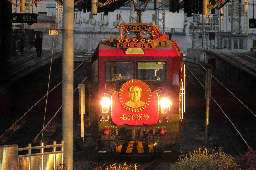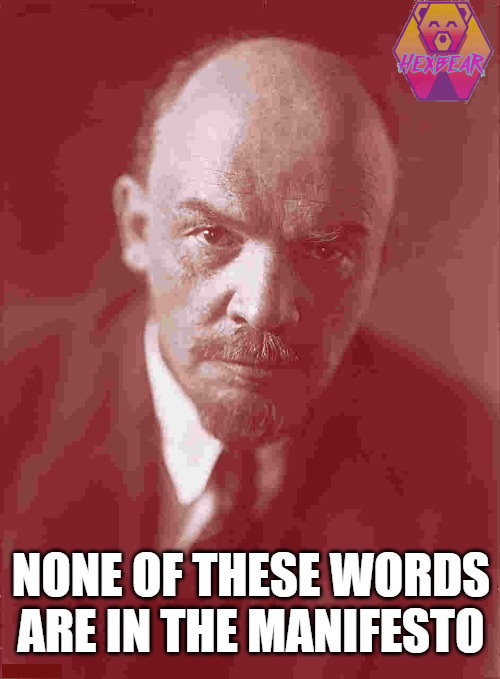Real question, I’d like to hear takes.
For years I lived in the same place so I knew how to get around. I also got around on bike/foot/transit. I rarely needed a navigation app.
But I recently moved to a new area, and the logistics of the move required me to get a car. With all the new places to learn, I started leaning on google nav more.
But every time it makes a route for me, it seems like it’s fighting against city planners. It will constantly direct me through little 1 way streets through residential neighborhoods if it thinks it can save .1 mile or 30 seconds.
As a concrete example, in my neighborhood the city planners have set up one road as the obvious exit, all the other roads have no lights or restrictions on turns. Navigation never uses that route, and prefers darting across lanes of traffic and turning during times it’s not allowed.
My partner and I joke about how many uturns it suggests. There’s a route I sometimes take where it suggests I make a 270 degree turn off a highway exit across 4 lanes of traffic.
In short, google drives like an asshole. It makes erratic decisions. And it routes people down roads that aren’t meant to carry lots of traffic.
I’m sure there’s some counterargument that this kind of navigation is load balancing and more efficient. But to me, I feel it makes things unpredictable and less pleasant to exist in a neighborhood.
is there any consensus on this stuff?
took me five years of reporting the road into my yard as private before they stopped routing people on it lol
I think it’s the enshittification of cities coinciding with the rise of Google Maps.
But every time it makes a route for me, it seems like it’s fighting against city planners. It will constantly direct me through little 1 way streets through residential neighborhoods if it thinks it can save .1 mile or 30 seconds.
I’m a Houstonian. My city is all big highways that sprout side streets like weeds. So, generally speaking, Google will try to put me on one of them as soon as it can.
But it will occasionally send me down a side street if the highway is gridlocked and the side street is relatively empty.
On a smaller scale - two lanes roads versus tiny side streets - idk if it tries to do the same thing. I’ve seen it send me down some weird side roads in smaller towns, but that’s only typically when the main lanes are clogged.
Idk if that makes things worse per say. If I know an area well enough, I can just tell Google to fuck itself and stick to the main roads.
If nothing else, having a big overhead map is handy. I grew up with the old gas station paper maps, and it was a lot more work to figure out directions. As soon as I could use MapQuest, I was printing everything out in advance.
Yeah, maybe I’m just in a region where the nav algo fails a bunch. My experience is pretty much the opposite.
I’ve seen it send me down some weird side roads in smaller towns
I’ve experienced this. I would say that the threshhold is too low. It will try to reroute me through residential to save 5 minutes on a 3 hour drive.
It’s clear that it’s only focused on the drivers, and not worried about the people in the neighborhoods, who now have highway traffic on their block.
Yeah it’s bad. I don’t use google navigation but when the app gives me a choice of routes I tend to take the longest one because it’s got the least bullshit.
The real wizards choice is to plan your trip beforehand, pull up the list of directions, either use it in the app or save it to a text file. When it comes time to drive, leave off location services and use your cars trip meter to navigate like the old days.
I call that the MapQuest way
- There’s a highway near me with tolled express lanes that google always wants me to use instead of the non-tolled lanes which are often jammed with traffic but the suggestion is near constant even in light or no traffic
- google will have me zig zag through side streets and quiet neighborhoods making left and u-turns across traffic instead of just using a perhaps slightly (< 2 minute or < 1km difference) longer but more direct route with 1 or 2 turns
The path / route finding algorithm is usually ok but will excessively choose a complex route over a simple one especially if it has determined it is the shortest by time or distance in absolute terms without looking at which is easiest, something that I’m sure that is hard to factor.
I think there is something to be said about google spreading more and more traffic out of its intended areas. I think I’ve seen in certain areas more enforcement and notices to restrict through-traffic but I don’t know about its effectiveness
Removed by mod
it’s an oft noted thing.
as a personal anecdote, back in may, i was on this road work job to replace a road in a town about an hour north. it was pretty torn up, a little residential street, but the thing is, it was near the local hospital. a regular person would drive along the arterial roads to the big traffic light at hospital drive, and get in that way, but, google maps would try to send lots of people down this little side street to a tiny connector to the back of the home depot, and from there onto hospital drive. i have a strong suspicion that this behavior contributed to how degraded the road surface was. it was not engineered to support that much extra heavy traffic before we got to it.
Probably not?
I mean, I can’t live without it at this point.
Not that I’m condoning Google at this point; we could always use better software for these things.
And to be clear, I’m not advocating against apps altogether. Just that the way they’re implemented seem to ignore any urban designing. There’s no real weighting to roads meant to carry through-traffic. Sometime it feels like it’s simple floodfill pathfinding.
ignore any urban designing
I think you’re right. AFAIK Google tracks the real-time position of every android device with GPS and location services turned on and uses that to evaluate traffic, then route people around traffic congestion. The algo is essentially trying to work around the appalling failures of “Just one more lane bro i promise just one more lane!” by utilizing all available streets to get from A to B. It is subverting urban design, but in the US at least urban design is terrible and actively counter-productive, consistently making traffic worse in many cases. This does cause problems - Lots of traffic through neighborhoods and increased wear on roads that were never intended to support serious traffic. But it’s a reflection of the system trying to find a workable route through the terrible design of urban America.
Removed by mod
I find google pretty bad for finding new public transit routes even though it’s decent at time estimates.
A lot of the time it takes me to less-connected stops that are slightly closer, even though an extra 2 minute walk is worth it to go to the stop that has more busses or trains flowing through it.
I always have to look at which stops are near me, and the routes near me to make a decision as to where to go
I think it optimizes for time and fuel costs, which works most of the time. In my area it almost always takes you along through roads (though it’s also kind of e-z mode here). Very annoyingly though the edge cases end up with people driving way too fast by elementary schools.
Fair.
The fact that these things are not only possible but also beneficial is your number one problem. American planning in general sucks.
Google suggesting you take these routes just means their routing works well and they predictably didn’t give its societal impact a second thought.
Goodass point
I don’t think it’s had time to really shape the actual structure of cities much yet, but I do think in plenty of localized areas like yours, it has made the traffic flows worse/more annoying. I’ve seen it mostly in exurban/rural areas around me, it occasionally will just jam up a side road with traffic, because of some minor slowdown on the main highway.
Honestly my theory, inspired by @[email protected]’s comment about how it pretty much works as intended in houston, is that it was designed for modern american cities and it probably has some unintended consequences on how it directs people in older more complex cities that aren’t just built for cars to go zoom more fasterer
my smartphone died recently and I haven’t replaced it with another apple/android, and I’ve been realizing pretty fast both my strengths and weaknesses navigating my own city. I never really liked relying on navigation for around town use when I should mostly know where I’m going, but I did use it when going somewhere unfamiliar or in a hurry before, and that resulted in some areas where I really just didn’t know the details, especially of the side streets, which I’m now learning (mostly on my bike), and some newfound strong feelings:
- a hatred of squiggly-road suburban developments where the main drags are deadly as a bike/pedestrian and the side roads are practically impossible to navigate without turn-by-turn (I still have map access but no nav), plus have no sidewalks if you’re walking
- a love of good wayfinding. I’m having to learn to go with the signs over going with my gut, because there has been some decent effort put into bike wayfinding here, and going with my gut frequently spits me out onto routes with unavoidable sections of biking in mixed traffic with fast moving cars lol
Google also doesn’t always know addresses, when I was doing drywall it didn’t know new addresses (cause they’re new) so I still had to drive like it was 2010 for me.
Yeah occasionally I’ve seen that. Its not like there’s an alternative that’s any better on that front though.
OpenStreetMap is spotty at best about having any addresses at all, paper maps are always going to at least a little bit out of date, etc.
and even the postal service can sometimes be slow to get new places listed (I had a friend live in a relatively new apartment building and they couldn’t put in a change of address because the building wasn’t in their systems yet.)
I guess the “alternative” that fixes this is a sensible street grid where you can tell what block an address is on by the numbering. Much of my city has this and it’s very nice
Mapping is hard. My city is close to a perfect grid so mapping apps generally do pretty well here. My biggest frustration with Google Maps recently is how deceptive it’s estimated times are.
For walking, cycling, and transit Google calculates the entire trip. Unfortunately for driving directions it only tells you the optimal time not including parking, getting settled in your vehicle, or getting to your final destination from your parking spot. People see these ridiculous estimations and assume driving is always faster but at the end of the day its faster to take one of the alternatives most of the time in my city.
Idk it has the best interface by far for accessing transit schedules though.
I find it does the worst when it tries to reroute you.
If you search the route before you go it’ll show you a route that uses main roads and highways. Then you make one stop and it changes the route to use side streets and does weird stuff.
If I have time I will plot the route ahead of time and pin it and it seems to work better.
Not 100% related but one thing I’ve noticed here is that it seems to have some trouble differentiating between places where you can cycle and places where you can walk. So if I’m trying to get walking directions in a place where for whatever reason the bike path doesn’t have an accompanying sidewalk it will just tell you to walk in the bike path. Conversely it seems to not realise that certain streets/areas aren’t for bikes at certain times and will try and have you bike there
Google navigation should never EVER suggest u-turns, it should be an opt-in toggle. It loves to suggest getting on the wrong way and u turn to reach your destination.







